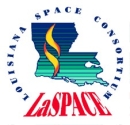



Payload 11 Information
Payload Flight Number:
Institution:
Payload Title:
Robotic Arm Manipulation and Materials Matching: RA(M 3 ) or RAM
Student Leader:
Faculty Advisor:
Payload class:
Payload ID Number:
11
Mass:
Current:
Serial Downlink:
Analog Downlink:
Serial Commands:
Discrete Commands:
Payload Specification & Integration Plan
Due: 06/22/2018
Delivered:
Payload Integration Certification
Scheduled: 07/27/2018
Actual:
Flight Operation Plan
Due: 07/19/2018
Delivered:
Final Flight / Science Report
Due: 12/07/2018
Delivered:
Abstract:
The need for satellite maintenance is growing as established satellites run out of fuel and degrade in the harsh environments of space. NASA’s Satellite Servicing Projects Division (SSPD) is developing unmanned craft to provide a lower-cost, lower-risk method of extending legacy satellites’ lifetimes. While only two active satellites are designed for maintenance, the next generation, including the James Webb Space Telescope, plan to leverage robotic refueling and maintenance. Our experiment for HASP tests the limits of relatively low-powered, semi-autonomous robotic dexterity, running repeated iterations of tests that require precision actuation, computer vision, and force-torque sensors. A robotic arm will perform simple tasks such as toggling switches, twisting objects, and opening/closing velcro flaps as one might while refueling a satellite on-orbit. Our experiment evaluates the impacts of extended use in extreme conditions. Orbital missions must contend with traditional lubricants evaporating in low-pressure environments, survive direct and uninterrupted sunlight, and control heating/cooling in the absence of convecting atmosphere. Over the duration of the flight we will measure any degradation in performance, response time, and accuracy. We will also test the efficacy of computer-vision, both for autonomy as well as for closed-loop feedback during operation.
Payload Integration Plan:
|